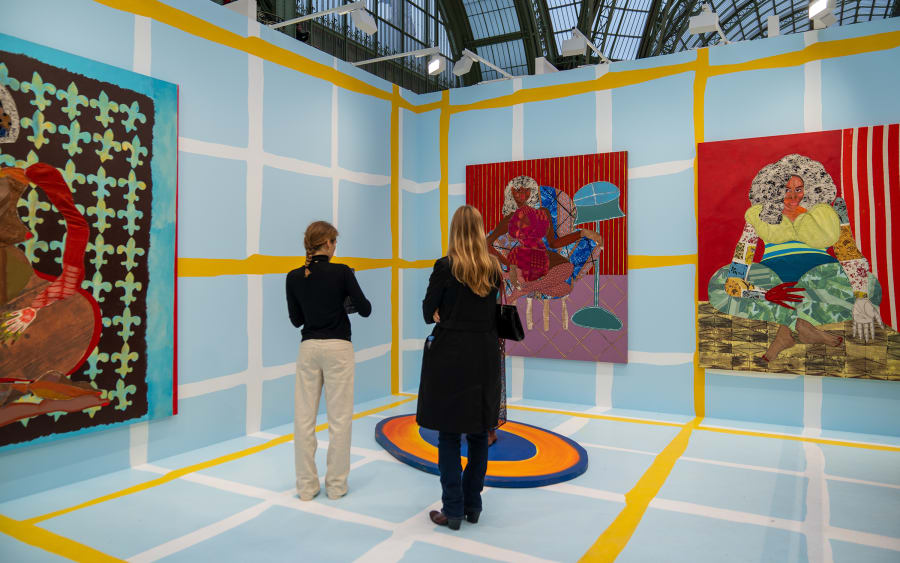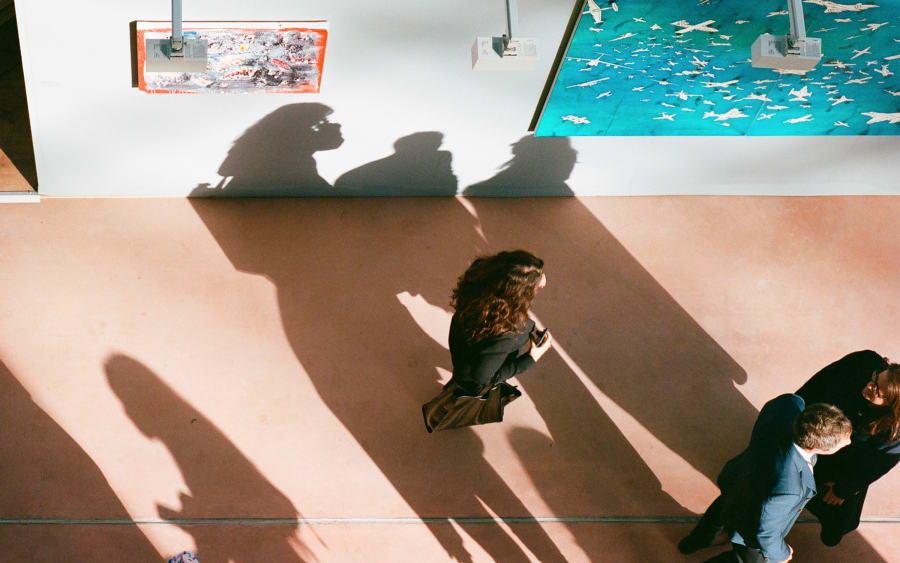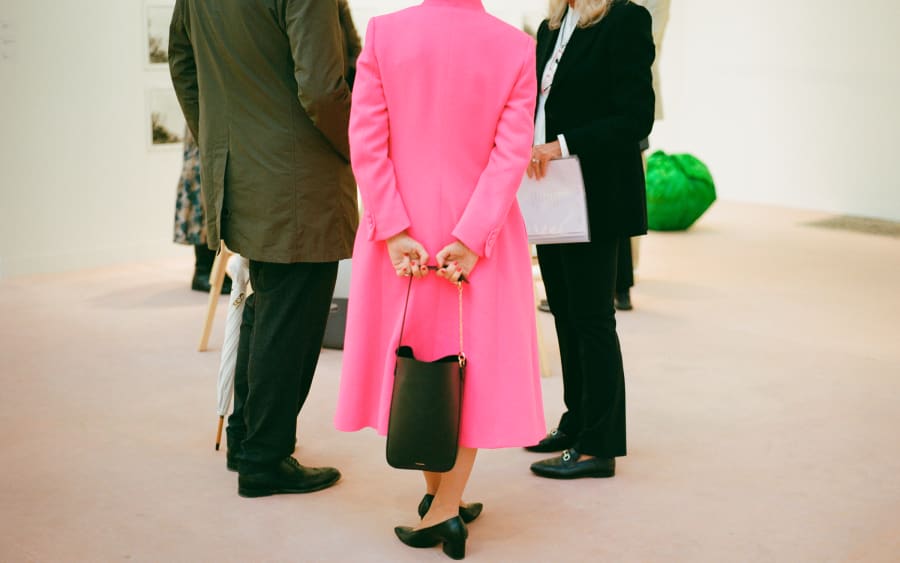Mainland Chinese collectors have long been recognized as a driving force in the global art market but China’s recent economic slowdown has sparked concerns about their spending power. The Art Basel and UBS Survey of Global Collecting 2024, however, reveals that Chinese collectors remain resilient against a backdrop of uncertainty – and confidence in the region continues to be strong.
Dr. Clare McAndrew, the author of the report, gleaned insights from around 300 high-net-worth individuals (HNWIs) from mainland China during 2023 and the first half of 2024. The survey suggests that despite the ongoing crisis in the country’s real estate market and low consumer confidence, both young and seasoned Chinese collectors have been expanding their collections, engaging with galleries, and are enthusiastic about acquiring more art in the future.
Once again, mainland Chinese buyers emerged as the biggest spenders on art and antiques in 2023. They also spent the most in the first half of 2024, with a median expenditure of USD 97,000, more than double that of any other region. ‘There hasn’t been a change in appetite when it comes to works in the top category, such as blue-chip work by Modern masters like Picasso and Andy Warhol,’ says Sue Jin, an independent art advisor based between Monaco and London. ‘Chinese collectors still want to buy the best when there is an opportunity. In fact, last year was my best year for selling major works.’
However, she notes that collectors are being more careful before pulling the trigger. ‘In 2021 or 2022, they would just buy after seeing a PDF, but now they want me to fly there to look at the work,’ she says, explaining that collectors want more information before making a purchase. Jin also observes that Chinese buyers have been less active in buying mid-career artists priced between USD 200,000 and USD 500,000 compared to previous years.
Jin’s experience is echoed in the report, which found that HNWIs from mainland China continue to have the collections with the largest proportion of top-tier artists compared with collectors from other regions. Last year, they had the highest share again by a considerable margin at 41%.
The art adviser Yuki Terase, a founding partner of Art Intelligence Global, observes a similar trend of collectors willing to chase trophy items. She also notes that they are becoming more discerning. ‘There is reduced activity in the middle tier where quality is not top-notch unless prices are set at extremely attractive levels,’ Terase says. ‘Rather than classifying [buyers] as risk-averse, I would say it’s a healthy maturation of the market with collectors becoming more seasoned and confident.’
Terase adds that Chinese buyers are pivoting away from young Western artists who dominated the market from 2021 to 2023 and are now gravitating toward local emerging artists. This is consistent with the report’s findings that just over half of expenditure by HNWIs in 2023 and 2024 was on works by new and emerging artists.
The Chinese media mogul and avid collector Thomas Shao describes collecting as ‘pursuing a lifestyle,’ which serious buyers continued to do last year despite the dampened mood in China. Shao notes that the art market followed a similar trajectory to China’s luxury goods market in 2024: ‘In the first half of the year, the luxury brands were selling well, but the second half was slower.’
René Meile, a partner at Galerie Urs Meile, which has locations in Lucerne and Beijing, agrees. ‘There was more anxiety around people’s [buying] behavior in China in the second half of 2024,’ he says, describing this as a psychological issue. ‘It’s not that wealthy people have less money. If you think about China since the 1980s, it’s like an [economic] miracle. Now, certain sectors are crashing, but the general economy is still growing. There just hasn’t been a slowdown in the past 30 years, so people aren’t used to it.’ Despite the bleak mood, the gallery had a strong year, but closing deals for higher-priced works is taking longer.
Meile says around 90% of the works the gallery sold last year were paintings. The report also indicates that paintings continue to dominate as collectors’ medium of choice, accounting for 49% of expenditure by value of the HNWIs surveyed. Notably, China has the highest median spending on paintings globally. Meile notes that this is not an indicator of conservative taste, citing the craze for video art in China 10 to 15 years ago. ‘Generally, collectors’ spending [habits] are still very much driven by what others buy. You have this swarm behavior where one feels there’s a certain security if they buy what others do, especially among young collectors.’
Not all collectors necessarily gravitate to painting, however. ‘Diversity is very important. I’m excited to explore new formats of art,’ Shao says, pointing to an installation by the Auckland-based Korean artist Yona Lee that he acquired from the Australian gallery Fine Arts, Sydney at Art Basel in Hong Kong last year.
In mainland China, a higher-than-average share of respondents to the Survey of Global Collecting work with art advisors (50%). In Meile’s experience, while the gallery prefers to deal directly with clients, many younger collectors use private dealers to acquire works. As the dealer puts it: ‘They don’t want to go through all the hustling. It can become very competitive to buy certain artists.’ Meanwhile, Shao avoids working with advisors. He says: ‘When building a collection, having your own perspective is important. Once you consult other people’s opinions too much, it becomes about investment value rather than a pure collection.’
Jin says that serious collectors see art as much more than an investment. She gives an example of a client being indifferent to the fact that the value of their Nicolas Party work rose significantly in 2023. ‘Even if they could make a profit of 2 or 3 million, that still wouldn’t motivate collectors like them to sell,’ she says.
According to the report, when it came to selling art, mainland China has the lowest share of respondents planning to part with a work within the next year (33% – the lowest for the past 3 years). In fact, the ratio of prospective buyers was twice that of sellers in the country. By contrast, the survey found a growing number of collectors in other regions planning to deaccession works, reflecting a more cautious approach than their Chinese counterparts.
In terms of preferred buying channels, the report indicates that the biggest share of auction-based spending was by HNWIs from mainland China, at 27% (compared to 20% globally), with spending through dealers in the region at 39%. Many collectors, such as Shao, primarily buy directly from galleries and transact in person. Young collector Cherry Xu also prefers to acquire work from galleries and art fairs. She gives the example of the Mexico City-based gallery Gaga, which she discovered at Art Basel in Switzerland last year. She also acquired work from a Los Angeles-based gallery, Château Shatto, which was also new to her. This aligns with the report, which shows that in the first half of 2024, mainland China had the highest proportion of collectors (56%) purchasing from new galleries.
While the survey shows a global trend of decreased spending among millennials and increased spending among Gen X collectors, young collectors continue to play a significant role in China. ‘Surprisingly, all the younger generation – new money – born after 1995 were actually starting to collect quite actively last year,’ Shao says. Meile, too, saw many new buyers in their mid 20s to 30s acquiring work from his gallery.
Xu – who studied fine art at university and began collecting 5 years ago – says many of her peers are avid collectors. Yet she admits that last year, they were more cautious when acquiring work by emerging artists. ‘It’s very different from 2 years ago. The whole market is very slow right now. I’ve also slowed down,’ she says, explaining that she is spending more time visiting biennales, exhibitions, and fairs across the globe. ‘I think there is no need to rush to decide when you first see an artist.’ Having said that, Xu acquired works by several artists she discovered last year, including German artist Cosima von Bonin, French artists Mimosa Echard and David Rappeneau, Japanese artist Yu Nishimura, and Portuguese artist Bruno Zhu.
The diversity of her acquisitions underscores the fact that mainland Chinese buyers are the most open-minded when buying art from various parts of the world, according to the report. When asked about future acquisitions, 57% of Chinese buyers say they have no particular preference by region. By contrast, a majority of respondents from all markets had a regional focus when it comes to future purchases.
Overall, HNWIs from mainland China report some of the most active buying plans, with 70% intending to purchase works in the coming year. Meile notes that the mood remains pessimistic in China, but he is encouraged by a growing number of new collectors entering the market. Jin says her clients with foundations and private museums continue to buy systematically to expand their collections based on a larger mission.
Some younger collectors such as Xu are also hoping to contribute to the art ecosystem in China. She is in the midst of establishing a non-profit institution called Cheruby and will host a pop-up exhibition for the Los Angeles-based artist Andrew J. Greene in Shanghai ahead of Art Basel Hong Kong in March. ‘This year, I want to do something exciting to bring some new energy here,’ she says.
Download the Art Basel and UBS Art Market Report 2024 here
Payal Uttam is an independent writer and editor who divides her time between Hong Kong and Singapore. She contributes to a range of publications including Artsy, The Art Newspaper, South China Morning Post and The Wall Street Journal.
Caption for header image: Miao Miao, Everyman, 2023, presented by Galerie Urs Meile at Art Basel Hong Kong 2024.
Published on February 10, 2025.


